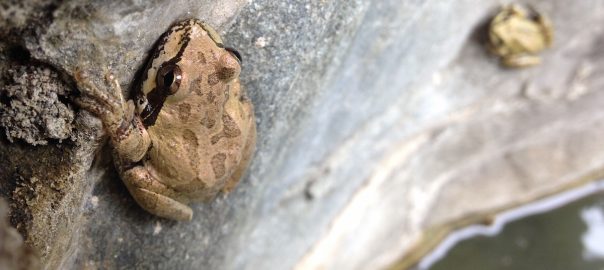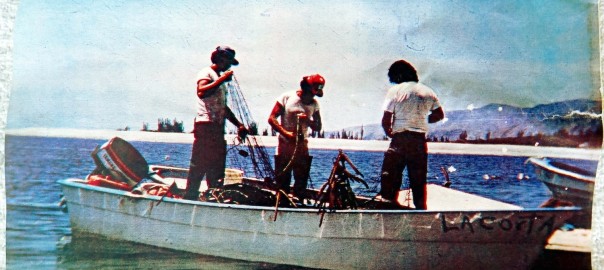Category: Mexico
The most beautiful cave in Sonora
Embattled Borderlands
by Krista Schlyer Continue reading Embattled Borderlands
Sonoran Caves: Where Few Dare Enter
by Omar Calva and Clément Ronzon Continue reading Sonoran Caves: Where Few Dare Enter
The challenge facing Mexico’s “Mediterranean” region
by Jorge Simancas Continue reading The challenge facing Mexico’s “Mediterranean” region
Protecting Mexico’s biodiversity from environmental degradation
by Benjamin Wilder and Sula Vanderplank Continue reading Protecting Mexico’s biodiversity from environmental degradation
How corruption is hurting Mexico City’s efforts to tackle air pollution
by Paulina Segarra and Ajnesh Prasad Continue reading How corruption is hurting Mexico City’s efforts to tackle air pollution
Baja California’s sea turtles swim out of the past
Could birdwatching save Latin America’s forests?
Five impressive scientists we met in 2014
Ezequiel Petrillo in Argentina Ezequiel Petrillo (pictured above) is an Argentine biochemist studying how chloroplasts behave differently depending on the amount of light exposure. He is trying to understand how a plant self-regulates and adapts to different environmental conditions by employing alternative RNA splicing, a process by which a single gene can give rise to … Continue reading Five impressive scientists we met in 2014
Latin America’s digital divide
How the lack of Internet access creates a new form of discrimination Continue reading Latin America’s digital divide
New ‘Game of Thrones’ slug found in Brazil, the ‘sponge effect’ of Latin America’s tropical forests, and Peru’s scientific cruise sails for Antarctica.
BRAZIL Brazilian scientists have discovered a slug that lives on the northwest coast of the country which they dubbed Tritonia khaleesi in honor of the character from the renowned television series “Game of Thrones.” The slug can grow up to 12 mm long and has a white stripe along the body that resembles the braid … Continue reading New ‘Game of Thrones’ slug found in Brazil, the ‘sponge effect’ of Latin America’s tropical forests, and Peru’s scientific cruise sails for Antarctica.
Fewer monarch butterflies in Mexico and important paleontological finds in Chile and Uruguay.
MEXICO There has been a reduction in the number of monarch butterflies migrating this year from the U.S. and Canada to Mexico and also a 10-day delay in their arrival to Michoacán. This is due to unusually wet weather and a reduction of the weed called “algodoncillo” where the species lays its eggs. Using corals … Continue reading Fewer monarch butterflies in Mexico and important paleontological finds in Chile and Uruguay.
Peru’s disappearing glaciers, a state of emergency in Brazil due to a caterpillar, and Rio de Janeiro’s sewage problems.
BRAZIL Brazil has declared a state of emergency in Mato Grosso, its main crop growing state, due to an infestation from an invasive caterpillar in corn, soy and cotton crops. Last summer, the pests caused $4.7 billion in damage. [inlinetweet prefix=”” tweeter=”” suffix=”via @LatAmSci”]Rio de Janeiro is having sewage problems at the site of its … Continue reading Peru’s disappearing glaciers, a state of emergency in Brazil due to a caterpillar, and Rio de Janeiro’s sewage problems.
Mexico passes a soda tax. So what's next?
How much of an impact can a soda tax have on the health of a population? Mexico recently approved a tax of 1 peso per liter—a little less than 10 cents—for beverages with sugar added. The measure hopes to address Mexico”s high rate of obesity, which according to the latest UNFAO report is one … Continue reading Mexico passes a soda tax. So what's next?
Argentinosaurus walks, 1.5 million-year-old Antarctic climate data, and scientists find the first poisonous crustaceans.
ANTARCTICA Certain regions of Antarctica could be storing climate data dating back to more than 1.5 million years, according to recently published Swiss and German scientists. Ice cores have small air bubbles and thus function as an “archive ” of the composition of the atmosphere of the time they were formed. http://www.youtube.com/watch?v=a1OP-fKcjHc ARGENTINA Scientists at INTA … Continue reading Argentinosaurus walks, 1.5 million-year-old Antarctic climate data, and scientists find the first poisonous crustaceans.
Monitoring whales in Argentina, gold mining and deforestation in Peru, and measuring biodiversity in the Amazon.
AMAZON More than 400 new species have been cataloged in the Amazon, says the World Wildlife Fund. ARGENTINA Argentine scientists have been studying whales off the coast of Patagonia for more than 30 years. Monitoring has been happening off the coast of the Península Valdés and 150,000 aerial images of 2,850 whales have been taken. Scientists at … Continue reading Monitoring whales in Argentina, gold mining and deforestation in Peru, and measuring biodiversity in the Amazon.











